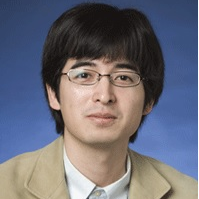Imaging Based Material Characterization of Electronics and Their Applications
A special issue of Electronics (ISSN 2079-9292). This special issue belongs to the section "Electronic Materials".
Deadline for manuscript submissions: closed (31 January 2022) | Viewed by 10770

Special Issue Editor
Interests: mineral processing; recycling; colloid and interface science
Special Issues, Collections and Topics in MDPI journals
Special Issue Information
Dear Colleagues,
Seeing is believing. There is no doubt that imaging is one of the most powerful characterization methods that is applicable to a wide range of different materials, including electronics, construction materials, natural ores, as well as industrial wastes.
This Special Issue aims to provide an excellent forum for scientists and engineers to share and exchange their latest contributions on the imaging base material characterizations of electronics and their applications. Within this context, original articles as well as insightful review articles are expected.
The development of new imaging methods and/or the combination of multiple supplemental imaging (and other) characterization methods for complex/functional materials used in consumer electronics in order to have a better insight into/opportunity of achieving eco-design and/or recycling is particularly welcome. A proper characterization of such complex materials is still a complicated and challenging task, since the majority of the characterization methods available in the market provide either an average property regardless of material/element spatial heterogeneity or the information within a very focused/tiny area (e.g., [1,2]). On the other hand, submissions that are relevant to many other areas of imaging electronics are also highly appreciated. You can find some potential contributions under “keywords”.
We look forward to receiving your contributions, and to future collaborations.
Thank you for your cooperation.
Best regards,
Dr. Akira Otsuki
Guest Editor
References
[1] Otsuki, A.; Chen, Y.; Zhao, Y. Characterisation and beneficiation of complex ores for sustainable use of mineral resources: Refractory gold ore beneficiation as an example. Int. J. Soc. Mat. Eng. Res. 2014, 20, 126–135.
[2] Otsuki, A. Non-destructive liberation analysis of printed circuit board, Proc. 16th International Waste Management and Landfill Symposium, Sardinia 2017, Sardinia, 2-6 October 2017.
Manuscript Submission Information
Manuscripts should be submitted online at www.mdpi.com by registering and logging in to this website. Once you are registered, click here to go to the submission form. Manuscripts can be submitted until the deadline. All submissions that pass pre-check are peer-reviewed. Accepted papers will be published continuously in the journal (as soon as accepted) and will be listed together on the special issue website. Research articles, review articles as well as short communications are invited. For planned papers, a title and short abstract (about 100 words) can be sent to the Editorial Office for announcement on this website.
Submitted manuscripts should not have been published previously, nor be under consideration for publication elsewhere (except conference proceedings papers). All manuscripts are thoroughly refereed through a single-blind peer-review process. A guide for authors and other relevant information for submission of manuscripts is available on the Instructions for Authors page. Electronics is an international peer-reviewed open access semimonthly journal published by MDPI.
Please visit the Instructions for Authors page before submitting a manuscript. The Article Processing Charge (APC) for publication in this open access journal is 2400 CHF (Swiss Francs). Submitted papers should be well formatted and use good English. Authors may use MDPI's English editing service prior to publication or during author revisions.
Keywords
- Complex/functional materials,
- New imaging method development, Combination of multiple supplemental characterization,
- Eco-design, Recycling, Material Processing
- Process optimization/intensification
- Multiphase flows (e.g. liquid-gas flows, liquid-solid flows)
- Neutrons, X-rays
- In-situ/Operando measurement
- Tomography/radiography
- Magnetic resonance imaging
- Automated image analysis
- Electron microscope (e.g. SEM, TEM)





